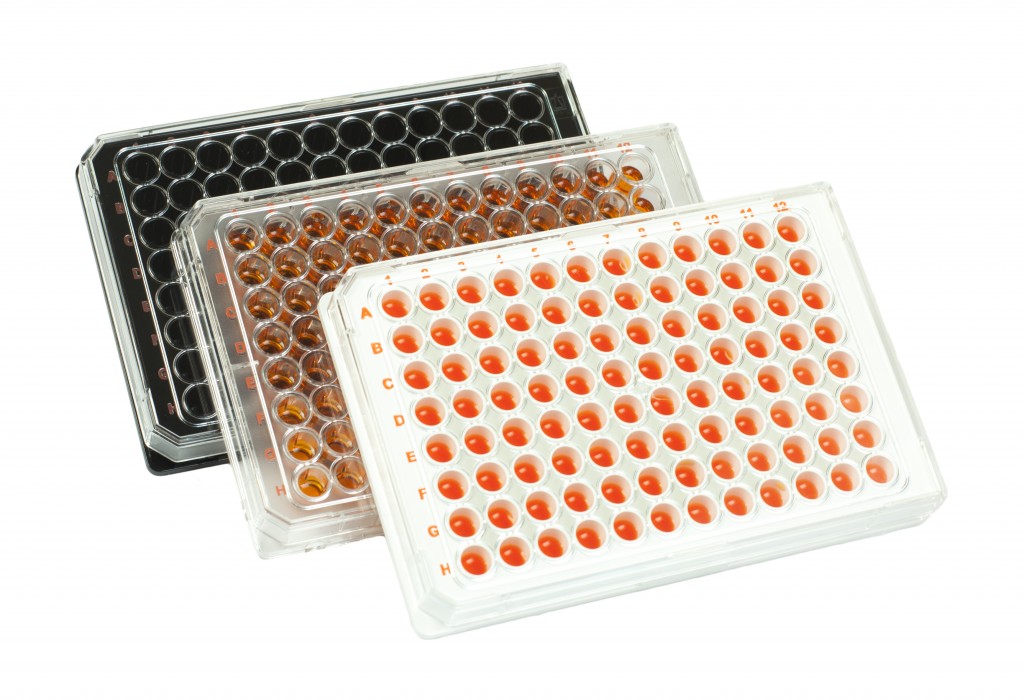The 96-well cell culture surfaces BRANDplates are available in the following four different plate surfaces: cellGrade, cellGrade plus, cellGrade premium, and inertgrade. The cell culture microplates are easily recognizable through the use of the orange embossed alphanumeric color coding for the 96-well standard plates.
Standard 96-Well cellGrade Cell Culture Surface Microplates
The cellGrade 96-well plates are designed for the cultivation of adherent cell lines. These sterile, polystyrene 96-well standard cell culture microplates are available in the following three well volumes: 330, 350, and 360 microliters. Available in three colors: transparent, black, and white. The 96-well standard cell culture surfaces are available with U-bottom, V-bottom, F-bottom, and C-bottom. The cell culture surface is hydrophilic when compared with non-treated polystyrene microplates. Serum components are easily bound onto freely accessible chemical groups, allowing an indirect adhesion of cells.
Transparent Bottom 96-Well cellGrade Cell Culture Surface Microplates
96-well microplates with transparent bottoms are also available in the following configurations: white with transparent F-bottom 330 microliter and black with transparent F-bottom 330 microliter.
Cells are cultivated today for a number of reasons, including the production of proteins and, in particular, as assay systems. Adherent cells prefer polar surfaces that possess hydrophilic functional groups. In contrast, suspension cells prefer extremely hydrophilic or hydrophobic surfaces that don’t allow any immobilization. The four different plate surfaces – cellGrade, cellGrade plus, cellGrade premium, and inertgrade – allow the optimum combination between microplate and specific cell line.
96-Well cellGrade Cell Culture Surface Microplate Video
For the cultivation of adherent cell lines
- Standard plate for the cultivation of adherent cell lines.
- Polystyrene surface with different chemical groups, such as carboxyl and hydroxyl groups, that are freely accessible.
- Surface is hydrophilic compared with non-treated polystyrene.
- Serum components are easily bound onto the freely accessible chemical groups, allowing an indirect adhesion of cells.
